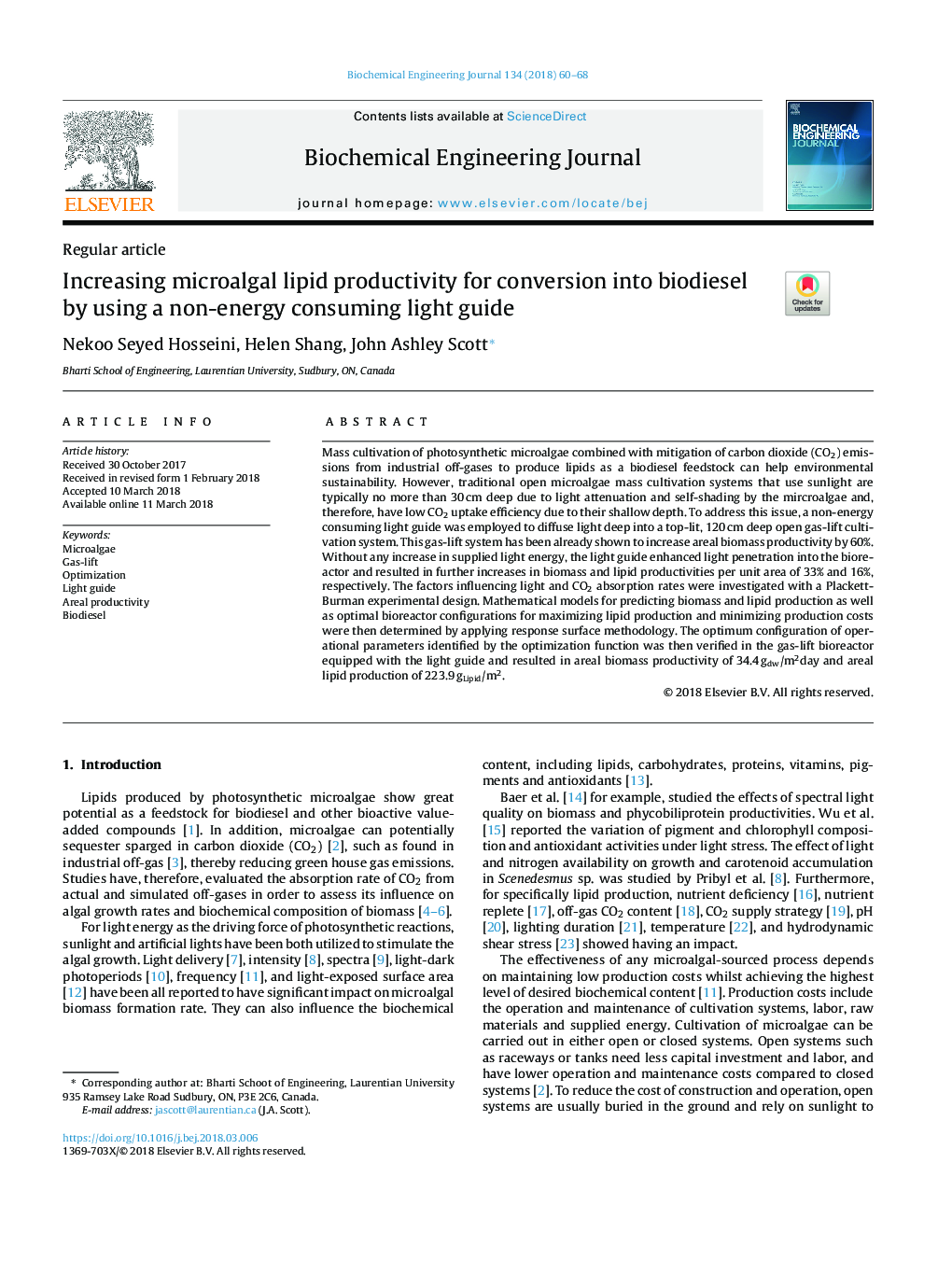| Article ID | Journal | Published Year | Pages | File Type |
|---|---|---|---|---|
| 6482208 | Biochemical Engineering Journal | 2018 | 9 Pages |
Abstract
Mass cultivation of photosynthetic microalgae combined with mitigation of carbon dioxide (CO2) emissions from industrial off-gases to produce lipids as a biodiesel feedstock can help environmental sustainability. However, traditional open microalgae mass cultivation systems that use sunlight are typically no more than 30â¯cm deep due to light attenuation and self-shading by the mircroalgae and, therefore, have low CO2 uptake efficiency due to their shallow depth. To address this issue, a non-energy consuming light guide was employed to diffuse light deep into a top-lit, 120â¯cm deep open gas-lift cultivation system. This gas-lift system has been already shown to increase areal biomass productivity by 60%. Without any increase in supplied light energy, the light guide enhanced light penetration into the bioreactor and resulted in further increases in biomass and lipid productivities per unit area of 33% and 16%, respectively. The factors influencing light and CO2 absorption rates were investigated with a Plackett-Burman experimental design. Mathematical models for predicting biomass and lipid production as well as optimal bioreactor configurations for maximizing lipid production and minimizing production costs were then determined by applying response surface methodology. The optimum configuration of operational parameters identified by the optimization function was then verified in the gas-lift bioreactor equipped with the light guide and resulted in areal biomass productivity of 34.4â¯gdw/m2day and areal lipid production of 223.9â¯gLipid/m2.
Related Topics
Physical Sciences and Engineering
Chemical Engineering
Bioengineering
Authors
Nekoo Seyed Hosseini, Helen Shang, John Ashley Scott,
